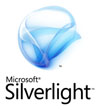Thanks for visiting my blog!

Url: http://phoney.codeplex.com/
UPDATE: Phoney now has a NuGet package. Search on NuGet to add Phoney to your project!
I started this project when I found I had a number of small classes that I’d built for my Windows Phone 7 application so I thought it was time to share. here is the information on the new library.
It is currently in a very early Alpha stage, but I expect to have it at a release version by MIX 11 (Mid-April). Let me know what you think!
**Project Description **
This is a project that contains several classes and controls for use with Windows Phone 7 applications. There are plans for:
- Standard Set of Converters
- Several Controls
- BitlyHelper
- TwitterHelper
- PhoneLogger
- ObservableObject
- FadingMessage class
Exposing all the Phone Resources (e.g. PhoneTextSizeLarge) as staticly typed accessors
Current Version is 0.1.
Only the following features are included:
- BitlyHelper
- PhoneLogger
- FadingMessage
- ObservableObject
- Phone Resources
Examples:
**BitlyHelper class **
Simple class for shortening URI’s using your own Bit.ly API Key/username:
BitlyHelper.SetCredentials("MYBITLYAPIKEY", "MYBITLYUSERNAME");
BitlyHelper.Shorten("http://phoney.codeplex.com", (result, error) =>
{
if (error != null)
{
MessageBox.Show(string.Concat("Error Shortening Url: ",
error.Message));
}
else
{
MessageBox.Show(result, 3000);
}
});**FadingMessage class **
This class is to create messages that show up as a popup that fades in and fades out. For simple messages:
FadingMessage.ShowTextMessage("Saved...");You can control the look and contents of the message by supplying your own UI objects:
FadingMessage msg = new FadingMessage()
{
MessageToShow = theMessage,
VerticalAlignment = VerticalAlignment.Top,
HorizontalAlignment = HorizontalAlignment.Right
};
msg.Show(3000); // 3 seconds**PhoneLogger class **
This class is to save a simple log file in Isolated Storage and can retrieve the contents of the log on demand:
PhoneLogger.LogError("Test Logging Message");
var log = PhoneLogger.LogContents;**ObservableObject class **
This is an abstract class that supports the INotifyPropertyChanged interface for ease of hand-building objects that need observation.
public class MyObject : ObservableObject
{
}**Phone Resources **
All of the known phone resources have accessors to give you strongly-typed access to the phone-based resources. Static Classes include:
- PhoneColors
- PhoneBrushes
- PhoneFontSizes
- PhoneFontFamilies
- PhoneTextStyles
- PhoneThicknesses
var theContainer = new Border()
{
Background = PhoneBrushes.PhoneContrastBackgroundBrush,
BorderBrush = PhoneBrushes.PhoneBorderBrush,
BorderThickness = PhoneThicknesses.PhoneBorderThickness,
CornerRadius = new CornerRadius(5)
};
theContainer.Child = new TextBlock()
{
Margin = PhoneThicknesses.PhoneMargin,
TextWrapping = TextWrapping.Wrap,
Style = PhoneTextStyles.PhoneTextNormalStyle,
Foreground = PhoneBrushes.PhoneAccentBrush,
Text = message
};In addition a PhoneTheme class that gives you a simple way to test for which theme (light or dark) the phone is using:
if (PhoneTheme.IsDarkTheme)
{
// Change something because it's dark
}
else
{
// Change it because it's light
}What do you think?
